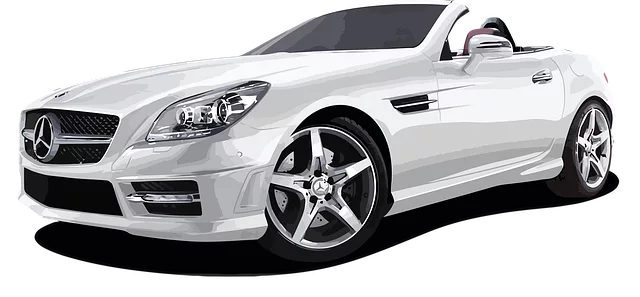In Toledo, modern car audio installation goes beyond music with the integration of backup sensor technology for enhanced driver safety and convenience. Both DIY enthusiasts and professionals can install these sensors, making low-speed maneuvers safer. Backup sensors prioritize visibility in low-light conditions, offering affordable solutions for DIYers and comprehensive systems for professionals. Proper selection and installation of the right sensor type (e.g., rearview camera, parking sensors) ensure seamless functionality for safer driving in tight spaces. Choosing compatible sensor types like radar or ultrasonic models based on needs and conditions is crucial for successful car audio setup in Toledo.
“In today’s digital age, backup sensor integration is no longer an option but a necessity in modern car audio installations. Whether you’re a DIY enthusiast or turning to professionals for a Toledo car audio installation, understanding and leveraging these sensors offers enhanced safety and convenience. This comprehensive guide delves into the benefits, integration process, and crucial factors for choosing the right backup sensor tailored to your specific Toledo car audio setup.”
- Understanding Backup Sensor Integration: A Necessity in Modern Car Audio Installation
- Benefits of Backup Sensors: Enhancing Safety and Convenience for DIY or Professional Installations
- The Process of Integrating Backup Sensors: Step-by-Step Guide for Optimal Performance
- Choosing the Right Backup Sensor for Your Toledo Car Audio Installation: Factors to Consider
Understanding Backup Sensor Integration: A Necessity in Modern Car Audio Installation
In today’s digital era, modern car audio installation has evolved beyond simple music playback. Backup sensor integration is now a crucial component, offering enhanced safety and convenience for drivers in Toledo or any other city. This technology plays a vital role in navigating bustling urban streets and parking lots, where every inch of space matters. By integrating backup sensors, DIY car audio enthusiasts or professional installers can transform a standard vehicle into a smart, safer machine.
For those considering car audio installation in Toledo, understanding the importance of backup sensors is essential. These sensors provide real-time alerts about nearby obstacles, helping drivers avoid potential accidents during reverse parking or low-speed maneuvers. Whether installed as part of a comprehensive car audio system or as an aftermarket upgrade, backup sensors are a game-changer for any DIY enthusiast or professional seeking to elevate their vehicle’s capabilities.
Benefits of Backup Sensors: Enhancing Safety and Convenience for DIY or Professional Installations
Backup sensors offer numerous advantages for both DIY and professional car audio installations in Toledo. One of their key benefits is significantly enhancing safety on the road, especially during low-visibility conditions like night driving or bad weather. These sensors provide drivers with a greater awareness of their vehicle’s surroundings, allowing them to detect obstacles more easily and react accordingly. This added caution can prevent accidents and protect both the driver and other road users.
For DIY enthusiasts taking on car audio installations, backup sensors provide an affordable and accessible solution for improved safety without requiring complex integrations. Professionals, meanwhile, can leverage these sensors as part of comprehensive sound systems to offer clients a safer, more convenient driving experience. In today’s digital era, where car audio installations in Toledo are becoming increasingly sophisticated, backup sensors serve as a game-changer, ensuring that drivers maintain control and awareness even in the face of challenges on the road.
The Process of Integrating Backup Sensors: Step-by-Step Guide for Optimal Performance
Integrating backup sensors is a crucial step in enhancing vehicle safety, especially for DIY enthusiasts or those looking to upgrade their car’s audio system in Toledo. The process involves several key steps for optimal performance. Firstly, identify the appropriate sensor type for your needs—whether it’s a rearview camera, parking sensors, or both. Next, locate the ideal mounting positions for these sensors; for cameras, this is typically at the rear of the vehicle, while parking sensors might be fitted to the license plate area or wheel arches.
Once the sensors are positioned correctly, proceed with the installation. For a DIY car audio installation, ensure all wiring is meticulously run and secured. Connect the sensors to your car’s electrical system, paying close attention to power and ground connections. Test each sensor individually before integrating them into your audio system. This meticulous approach guarantees that your backup sensors function seamlessly, providing drivers with a comprehensive view of their surroundings for safer driving, especially in tight spaces or while backing up.
Choosing the Right Backup Sensor for Your Toledo Car Audio Installation: Factors to Consider
When integrating a backup sensor into your Toledo car audio system, whether you’re opting for a DIY installation or seeking professional services, several factors come into play to ensure optimal performance and safety. The first consideration is compatibility – choose a sensor designed specifically for your vehicle make and model to guarantee seamless integration without any electrical interference with existing systems.
Next, sensor type plays a crucial role. There are various options available, from basic magnetic sensors to advanced radar or ultrasonic models. Each has its advantages; for instance, radar sensors offer excellent range and penetration through obstructions but may be more susceptible to false readings in wet conditions. Ultrasonic sensors are cost-effective and reliable, ideal for simple backup assistance, while professional car audio installation experts might recommend advanced radar systems for enhanced accuracy and features like cross-traffic alert.


